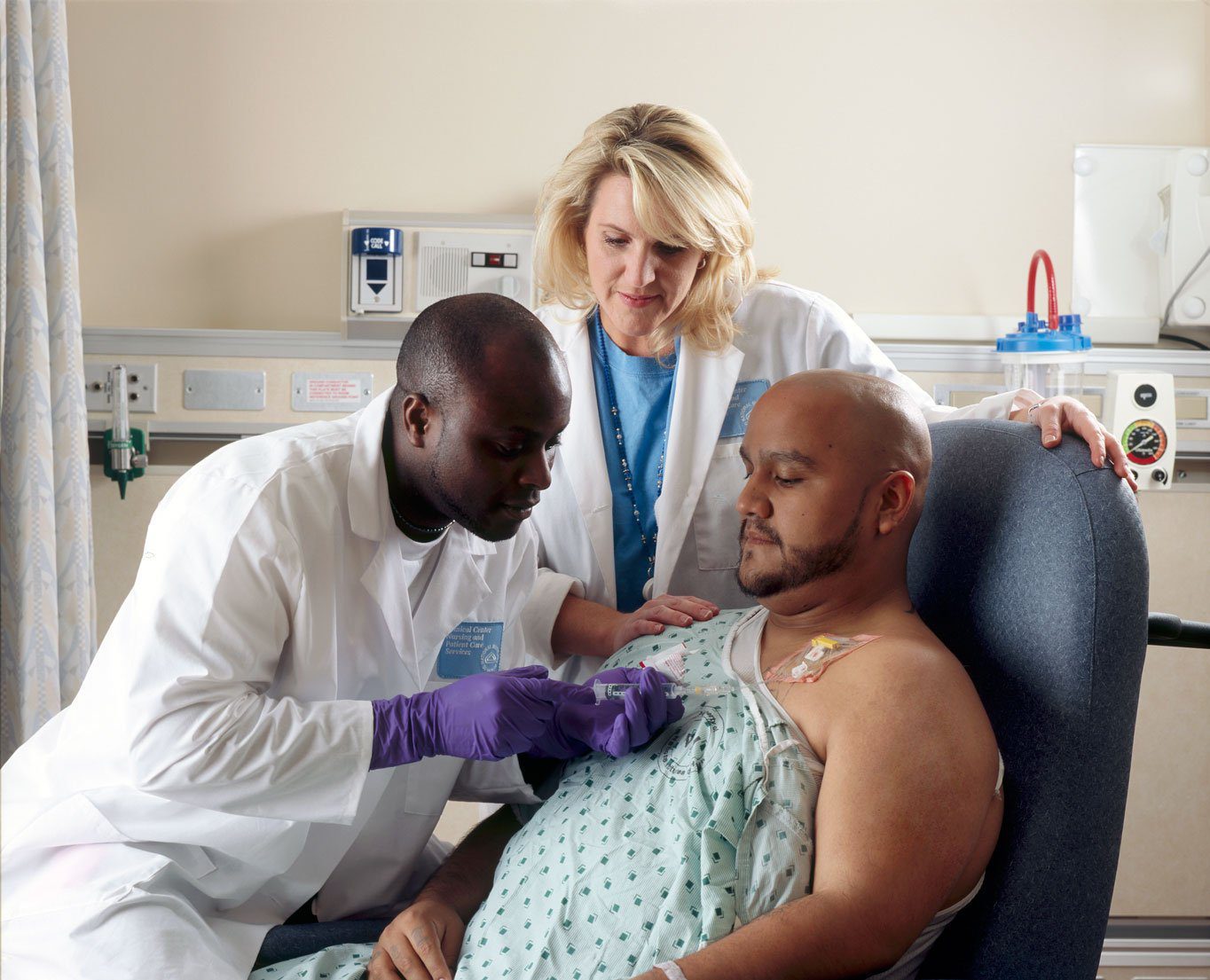Cannabis for chemotherapy treatment studies and research in the past few years shows that cannabis can alleviate and ease symptoms that come with chemotherapy.
Cannabis for Chemotherapy Treatment
Today, changes in people’s perspective in marijuana is noticeable, even the cannabis for chemotherapy treatment studies is advancing slowly. Yet, even cannabis has been legalized last October 2018, the plant is still a “taboo” to other people.
The root of this is from the fact the marijuana in Canada was illegal since 1923, and also that this plant was a Schedule 2 drug in Canada.
Because of these hurdles, there were little efforts in studies and research with this plant and other various herbs.
With the change of views of Canadian people about marijuana, it will surely make medical experts put more effort in studying and researching the plant, especially in the field of cannabis treatment for
chemotherapy
Recently, there are a number of advanced research on how cannabis will improve the conditions of cancer patients. However, there were a total of 70 good studies that have been conducted already.
The said studies do not contain any studies and research on oxidative stress or cannabis effects on inflammation, both are generally associated with cancer.

Nonetheless, there are also many various studies that concentrated on how nausea, pain, and other symptoms are affected by cannabis for chemotherapy treatment of cancer patients.
Studies show that at some point, 39.6% of Americans in their lives will be diagnosed with cancers, and cancers will affect almost everyone.
Medical experts especially oncologist support the recommendation that marijuana should be a part of the medical treatment of cancer patients
Even all the documented facts about the positive effects of marijuana to ease the symptoms of a cancer patient suffer from, cannabis is still classified as a Schedule I drug as the reason for no known medical
benefits and a high potential for abuse by the U.S.
The Federal government’s stance on cannabis consequently hurdles the advancement of studies and research for the “cure” using cannabis for cancer.
Medical Cannabis and its Cannabinoids.
Cannabis is a plant that is used for medical and recreational purposes. The plant contains the psychoactive compound known as THC (Tetrahydrocannabinol).
THC is the most popular compound out of the 483 known compounds in cannabis which give the “high” or “stoned feeling. Other Than THC, we have the second most known compound, the non- psychoactive CBD (Cannabidiol), which have the medical traits of the plant Other people testify that marijuana can help and relieve the side effects and symptoms of cancer treatment “chemotherapy”.
But again, because marijuana is still illegal in the federal government’s eyes, the advancement of studies and research to cannabis is still slow and uncertain about the benefits of cancer patients.
However, a number of studies and research states that drugs containing cannabinoids do help to alleviate the symptoms and side effects like nausea, pain, and vomiting of cancer treatment. Research does show that some cannabinoids can help with some symptoms and side effects, and drugs containing cannabinoids have been developed to treat pain, nausea, and vomiting.
What are Cannabinoids?
“Cannabinoids” in short, is a group of complex compounds both man-made and natural that binds themselves to cannabinoid receptors. These receptors are protein molecules that can be found on the
surface of cells.
For a thousand years, humans have been consuming and using marijuana, yet, cannabinoids were only extracted and purified in the 1940s.
The cannabis main active cannabinoid was discovered in, the Delta-9 THC (Delta-9 tetrahydrocannabinol.
And it was in the late 1980s when the cannabinoid receptors were discovered and were followed by the discovery of cannabinoid-like substance, the endocannabinoid being produced by our own body.
Two Types of Cannabinoid Receptors.
As you know, there are two types of cannabinoid receptors that can be found on your body. These are the CB1 and CB2 cannabinoid receptors.
These receptors have been observed that they perform different activities and can be found in different
areas of the body.
CB1 Cannabinoid Receptor
These kinds of receptors are commonly found in your nerve’s ends and mostly in your brain. Studies show that the CB1 receptors are the responsible of you being “high” when you consume cannabis
CB2 Receptors
While CB1 receptors mostly found in your brains, CB2 receptors are commonly can be found on your immune system.
Studies and research all over the years have discovered that cannabinoids and endocannabinoid receptors are tightly linked to the vastly different kinds of functions in our bodies like energy metabolism, heat functions, assisting the brain and the immune system to function and even in our
reproduction.
Because of cannabinoids and endocannabinoids activities in the molecular level, they are implicated in various kinds of conditions from cancer even up to neurological illnesses
Cannabis for Chemotherapy Side effects
Utilizing drugs containing cannabinoids or cannabis for chemotherapy or both may assist you with unwinding and give you a feeling of happiness. In any case, research and studies of cannabis had various outcomes like a couple of individuals with cancer may discover utilizing cannabis or meds that contain cannabinoids that may cause them to adjust to these side effects and reactions.
Pain relief
A few people guarantee that cannabis for chemotherapy can help mitigate chronic (long-term) or unbearable pain. Research and studies done so far don’t offer a viable proof of cannabis being able to ease pains. Some clinical trials claim that cannabinoids can ease pain in certain individuals.
Sativex is a blend of delta-9-THC (Tetranabinex) and cannabidiol (Nabidiolex). It has been approved for use in Canada as a spray that can be applied under the tongue and on the walls of your mouth. Sativex
might be utilized to reduce pain from cancer that can’t be alleviated with the strongest meds of opioids
Loss of Appetite
Loss of appetite a typical issue for cancer patients. The loss of appetite and weight loss (which is called cachexia when it is serious) often accompanies each other.
A few people find that cannabis for chemotherapy treatment can increase their appetite. A few clinical experiments saw marijuana’s impacts on hunger and weight loss in individuals with cancer.
Until today, these examinations haven’t concluded if cannabis can viably improve appetite. Clinical tests into whether cannabinoids can help individuals with cancer and can manage the loss of appetite haven’t had clear outcomes yet.
Nausea and vomiting
A few studies and research have indicated that some cannabinoids can calm both vomiting and nausea. These are symptoms of some side effects of treating cancer, including chemotherapy and radiation
therapy.
Nabilone (Cesamet) a drug with synthetic cannabinoid is approved for use in Canada to treat vomiting and nausea brought about by the side effects of chemotherapy. It is sometimes given to cancer patients if approved anti-nausea meds don’t help ease these side effects.
Conclusion
Even though many studies and research have been done with the cannabis plant, the U.S government still sees cannabis as a Schedule I drug.
Many individuals claim that the side effects brought by treating cancer can be alleviated with cannabis. Still, thorough research and extensive studies must be conducted to give as viable proof if cannabis really
can treat cancer.
But because of cannabis is still illegal on the federal level, medical experts, as well as cannabis specialist, may have a hard time conducting clinical-grade trials. So in short, cannabis is not an alternative for chemotherapy, instead, cannabis ease and alleviates the side effects that come with it.

 DISCORD
DISCORD